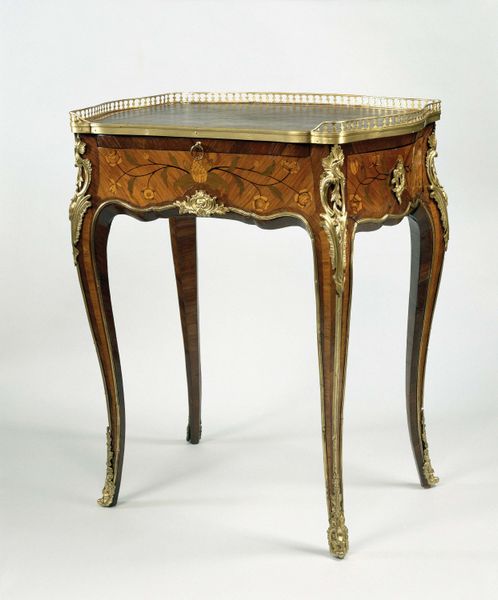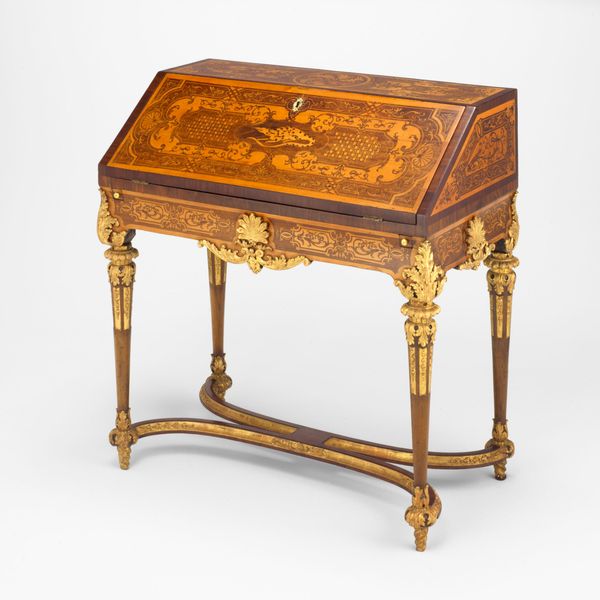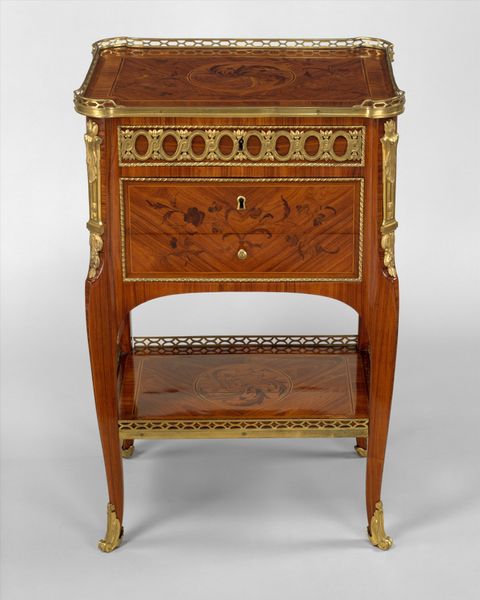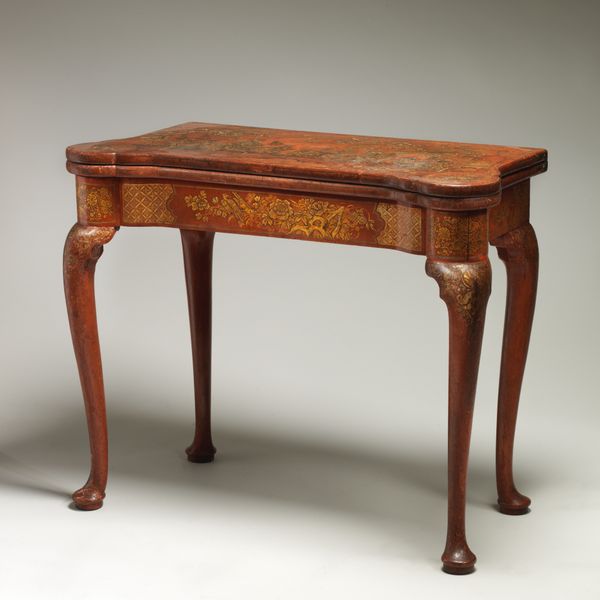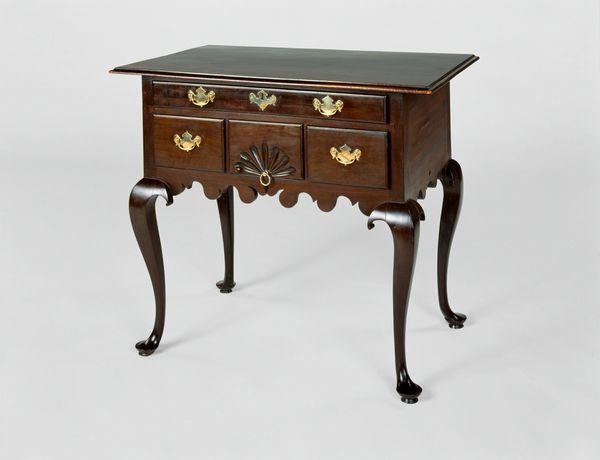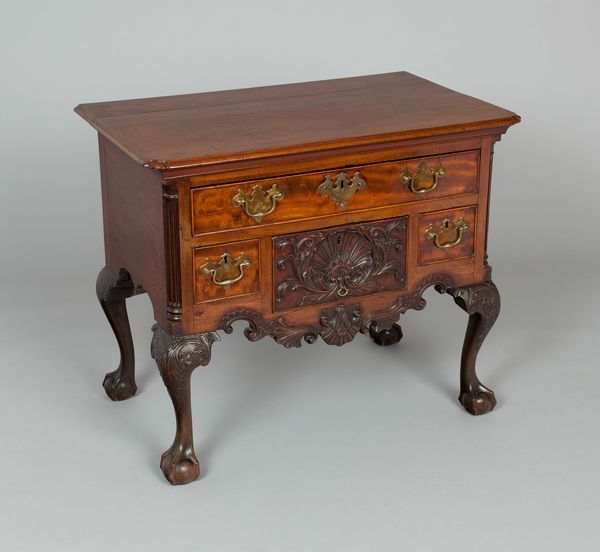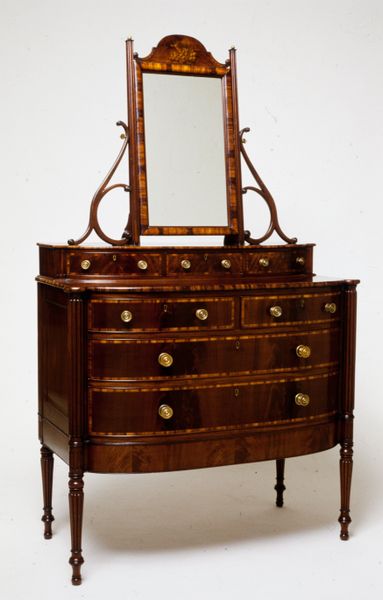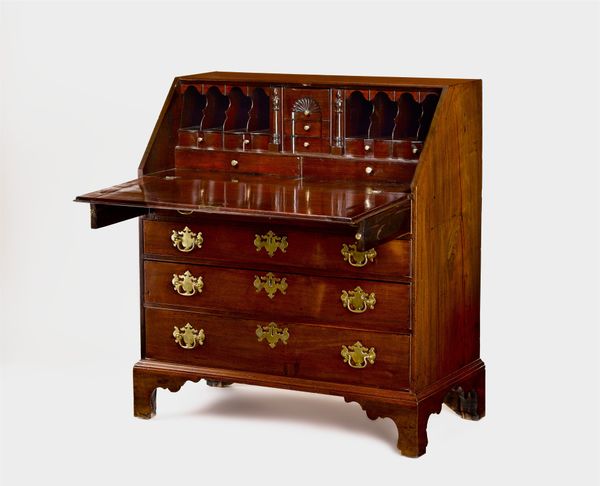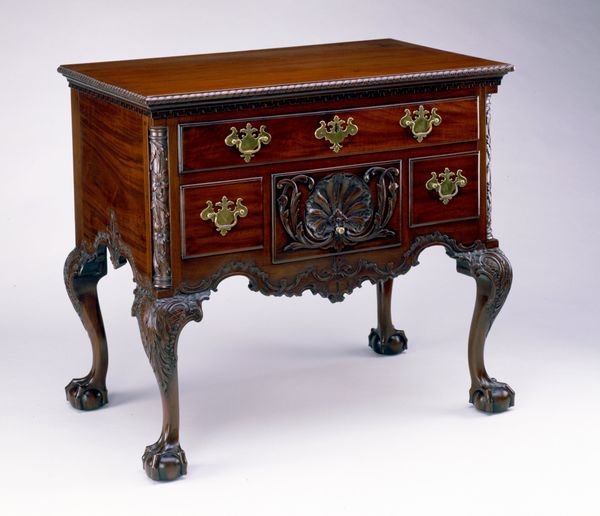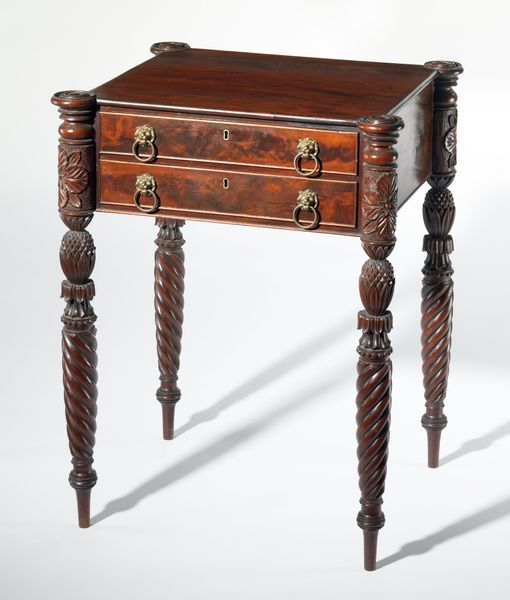
metal, wood
#
portrait
#
baroque
#
metal
#
sculpture
#
furniture
#
france
#
wood
#
decorative-art
Dimensions: 38 1/4 x 41 1/2 x 23 1/2 in. (97.16 x 105.41 x 59.69 cm)
Copyright: Public Domain
Curator: What strikes me first is the sheer extravagance! It is pure visual indulgence. Editor: Indeed. Here we have a lady’s writing desk, crafted around 1750, and attributed to Jean Gaspard Feilt. It is currently held in the collection of the Minneapolis Institute of Art. Observe the inlaid wood and the ormolu, or gilded bronze, mounts. Curator: Gold speaks so loudly. How was it perceived? More importantly, what did it mean to those who saw and interacted with it daily? Because this is not just furniture; it's a stage for ritual, a focal point of the domestic space. Editor: Precisely. The desk speaks to a culture of refined leisure, and feminine artistry but more specifically, about social distinction and wealth. Such craftsmanship represents the heights of the French Baroque. Imagine this piece sitting within a sumptuously decorated salon. The desk is not merely functional but rather serves as a demonstration of power. Curator: And it presents a highly feminized stage—all the swirling Rococo floral and leaf ornaments appear soft and fluid, embracing the organic. Consider the desk as an active symbolic carrier. It signifies an intricate interplay of femininity, literacy, and elevated social rank, which says so much about this era’s social semiotics. Editor: A perfect point. Owning a desk like this elevated not only social status but access to education. During this time in history, it became a form of empowerment in an otherwise completely restrictive culture. As they engaged in written correspondence, kept journals, or managed household accounts, they inscribed themselves into a broader narrative, beyond the limitations of domestic expectations. Curator: As we interpret this piece, it becomes a tangible entry into past rituals, inviting deep speculation of former uses. Every object possesses stories within the social fabric of their origins and that makes me pause to consider it anew. Editor: The piece, as a material object, echoes social, political, and intellectual dynamics, creating links with long gone individuals and cultures. The fact it's here now in a museum shows how relevant these symbols from the past remain for understanding societies of our own.

